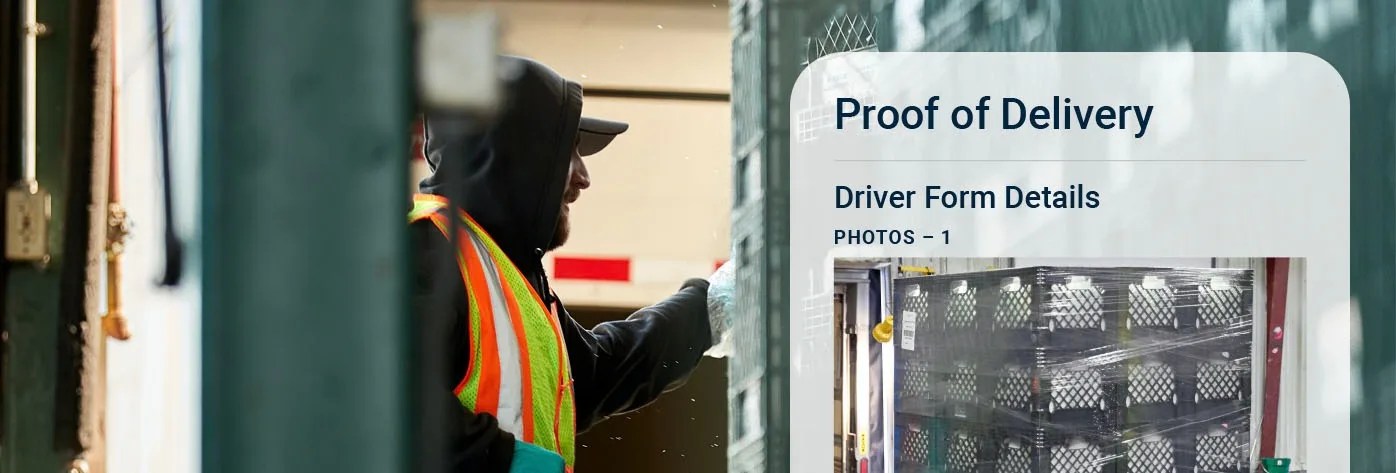Efficiency
4 Key Takeaways from the ATA MCE
October 18, 2019

Last week over 3,000 stakeholders from the trucking industry gathered in San Diego at the American Trucking Association Meeting Conference & Exhibition (ATA MCE). While there, we had the opportunity to exchange information with some of the brightest minds from the analyst community, OEMs, policymakers, vendors, and more. In case you weren’t able to attend, or you just want a quick refresher, read on for our four main takeaways from the event.
1. The Crash Preventability Demonstration Program seeks to provide greater context to CSA scores
Every year the American Transportation Institute (ATRI) surveys roughly 2,000 trucking stakeholders on a broad range of subjects in order to identify the top ten issues facing the industry. The results are then released during ATA MCE’s *The Big Reveal* session.
This year, number eight on the list of issues was CSA. This placement reflects the growing complaints among drivers and fleet operators around the way CSA scores are represented on the FMCSA’s public website. This concern is mainly rooted in the fact that little to no context on crash preventability is given within these reports, which can often lead to inaccurate impressions about the real risk posed by a carrier.
By carefully listening to carriers on this topic, the FMCSA has been pursuing the Crash Preventability Demonstration Program. This initiative looks to provide a channel for carriers to pursue remediation in the event that one of their vehicles is involved in an unpreventable crash where they were not at fault.
While some from within the industry have felt that the process involved in gathering and submitting evidence has been overly cumbersome, the agency is making efforts in bringing more context to the way carrier CSA scores are calculated and also a resource for carrying out corrections.
2. Proposed changes to HOS rules would increase flexibility for carriers
The previous head of the FMCSA, Ray Martinez, opened the ATA MCE with a set of remarks highlighting several different policy projects underway at the organization. He also brought special attention to the fact that government's ability to avoid stifling productivity and innovation hinges on a close and collaborative relationship with the trucking industry.
Top of mind for many in the room were the recently proposed Hours of Service changes, which include five core revisions that seek to add more flexibility to the rules:
A two hour extension to the available duty time for drivers who encounter adverse weather conditions.
Increased flexibility for when and how drivers are permitted to take their 30-minute rest break.
Allowing short-haul drivers, those not subject to the ELD mandate, to have their maximum on-duty periods extended from twelve to fourteen hours. Their maximum operating distance radius would also increase from 100 to 150 air miles.
Increased flexibility to the sleeper-berth exception, which we describe in detail here.
The introduction of an off duty break of at least 30 minutes, but not more than 3 hours, that would pause the 14-hour driving window so long as the driver takes 10 hours of off-duty at the end of the workday.
Also worth noting is that Hours of Service was the second top concern area from ATRI’s survey during The Big Reveal session, further validating the need for more meaningful dialogue around these rules and their effectiveness. These proposed changes help demonstrate the potential impact collaborative efforts between the trucking industry and those responsible for looking after the policies that govern it can have.
If you haven’t done so yet, there is still time to make your voice heard on these proposed changes by visiting the FMCSA’s webpage here.
3. Finding ways to address the driver shortage is top of mind for everyone
Today, there are roughly 60,000 unfilled truck driver positions within the US according to ATRI. For the third consecutive year, a shortage of drivers made it to the number one position on ATRI’s list of top issues facing the industry. There are also projections that this number could triple over the coming decade.
According to Bob Costello, ATRI’s chief economist, if left unchecked, the driver shortage could shift what is presently a frustrating operational hardship into a future situation where wage spikes and even shortages of goods on shelves emerge as forms of further disruption.
The worker gap requires a collective effort in tackling the challenge from multiple angles. Mr. Costello drew attention towards bringing more retirees and military veterans into the fold, and also discussed the need for helping more women find ways into the industry, as they currently make up only six percent of the total labor pool today.
Another promising initiative around expanding the pool of available drivers is the FMCSA’s 3-year Military CDL Pilot Program. Under this program, 18 to 20 year-olds who have received heavy vehicle training and hold certain military occupational specialty ratings will be permitted to operate commercial motor vehicles in interstate commerce.
Data will be gathered and compared against a control group of a comparable drivers, ages 21 to 24, to help inform what kind of training could be required to extend this program to non-military participants and also to determine whether age is a critical safety factor. This program could help bring drivers into the trucking industry at a younger age, where historically those first entering the field have been in their late twenties to early thirties.
4. Driver retention requires more than just competitive compensation
It’s no secret that driver wages rank among some of the highest for blue-collar job compensation. And while these generous salaries function as a powerful tool for bringing people into the industry, they aren’t always effective at keeping drivers at a particular company once in the field.
This point was further emphasized during ATRI’s session when Gary Helms, a Covenant Transport driver and the ATA America’s Road Team captain for 2017-18 stated, “I go to work to be paid, but I need more than that to stay where I’m working, I need to feel that the job I am doing is valued, that the job I am doing has worth, I need that to be content.”
Drivers are increasingly wanting to feel like their involvement represents more than just a source of labor for their company's operations. Here at Samsara we’re continuously challenging ourselves to think about ways to increase retention by fostering healthy competition, creating rewards-based incentive programs, and generating a sense of mission among your driver base.
See you Next Year at ATA MCE!
The ATA MCE was an amazing opportunity for our team to build new relationships, gain fresh perspectives, and share information among our peers in the trucking industry.
Whether you stopped by our booth at ATA MCE or couldn’t make it to San Diego this year, we’d love to hear from you.
Get in touch any time at sales@samsara.com and we look forward to seeing you next year in Denver!



















